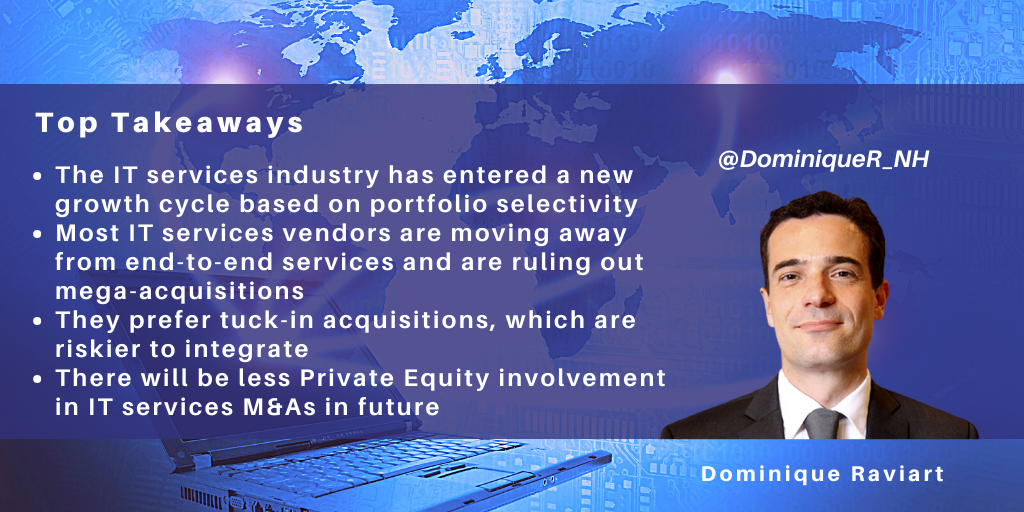posted on Jun 08, 2023 by Dominique Raviart

The IT services industry has entered a new growth cycle, with increased emphasis on portfolio management and vendors increasingly divesting their low-growth, low-margin businesses.
IBM was an early example of this trend with its Kyndryl spin-off. Several of its competitors are also following this pattern, including Atos. At the same time, in the Nordics, Tietoevry will go one step further: the company will divest its infrastructure and half of its application services business. A much smaller vendor, NNIT in Denmark, sold its IT infrastructure business to private equity in May 2023. In these four examples, the companies are targeting higher revenue growth and margins by offloading their low-growth, low-margin activities.
The move may sound obvious. But portfolio selectivity certainly wasn’t the dominant message in the past twenty years. When communication service providers or hardware vendors entered the industry from the late 90s to the mid-2010s, their message was about end-to-end services and bundled (‘integrated’) services. Most major IT services vendors offered the full range of IT infrastructure and application services and expanded selectively to BPO and ER&D services. That approach still works well for some leading IT services vendors such as TCS but increasingly less so for a number of others.
Tuck-In Acquisitions Will Continue Apace
A consequence of the current portfolio focus and rationalization is that large M&As are decreasing. Instead, most tier-one IT services vendors are increasing their emphasis on tuck-in additions in areas such as digital, cloud, and security, and to a lesser extent in traditional areas such as consulting and SAP services, frequently in support of geographic expansion. Accenture, NTT DATA, and, more recently, IBM Consulting have been the most active in this respect.
In addition to the areas listed above, we expect selective expansion in growth areas such as AI and data, and further investment in front-office applications such as marketing automation. Also, we expect selective investments in ER&D services, targeting connected products and digital manufacturing/industry 4.0. And with rising defense budgets globally and more digital products, defense IT should also be on the agenda. Yet, for sovereignty and security reasons, the increased defense IT spending will benefit only firms partnering with local defense firms.
Acquiring small but high-growth specialist firms currently makes sense. Yet, in previous cycles, many IT services vendors targeted mid-size to large competitors rather than tuck-ins to avoid talent exodus resulting from a small and flexible firm being absorbed into a larger and more process-oriented entity.
Overall, this growth cycle is about organic growth and increased margin. The leading vendors will avoid using their cash on major expansions into new, more speculative areas and stay close to their roots.
PEs Looking to Exit IT Services Investments
Private Equity attitudes towards IT services firms have also changed. With (still) rising interest rates, access to M&A funding has become more costly, primarily impacting PE. We will see less PE activity around acquiring IT services firms in the next few years, as highlighted by the failed DXC take-over. Valuations should go down. In the meantime, several PEs will want to exit their IT services investments (e.g., Virtusa, Coforge, Hexaware, Expleo, Inetum, Engineering).
